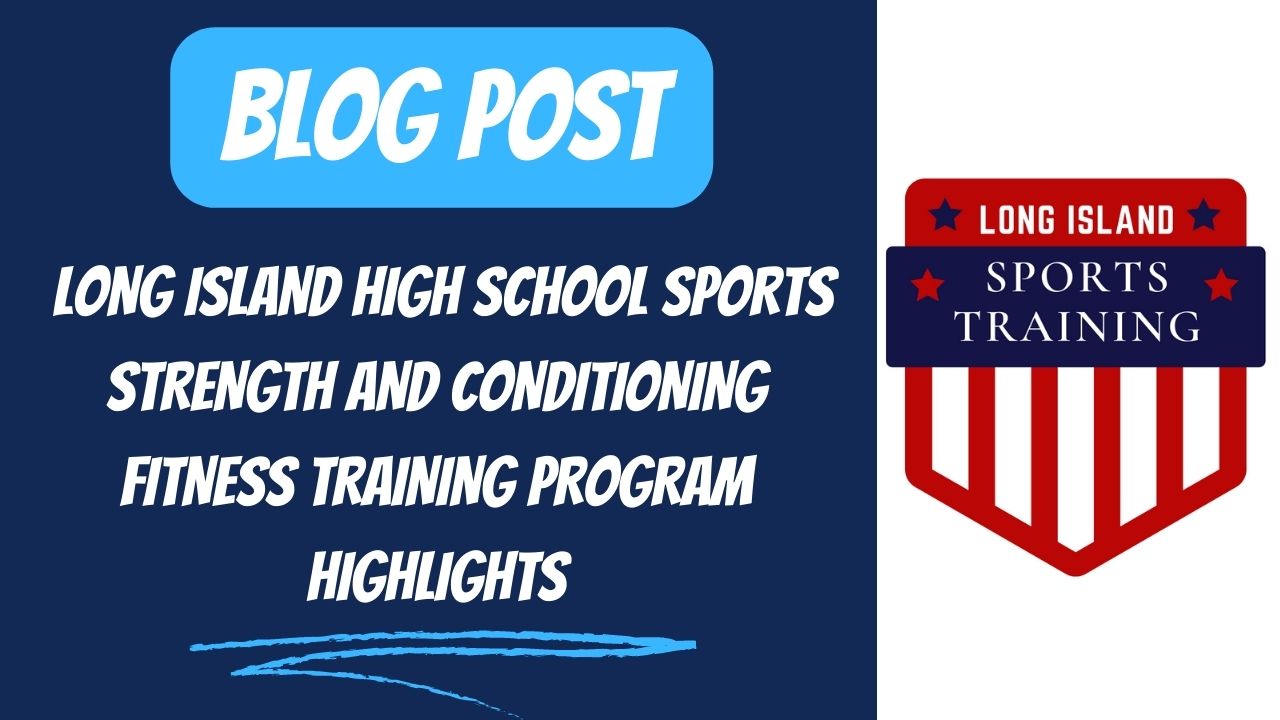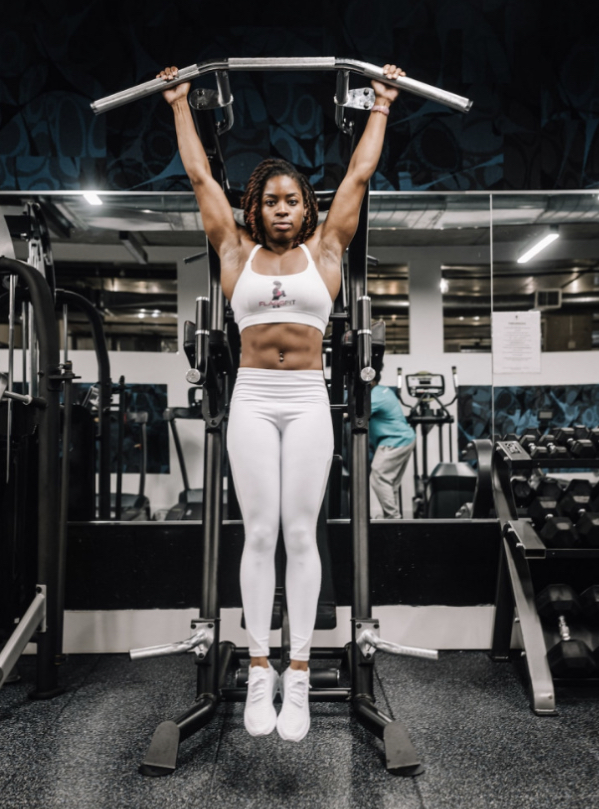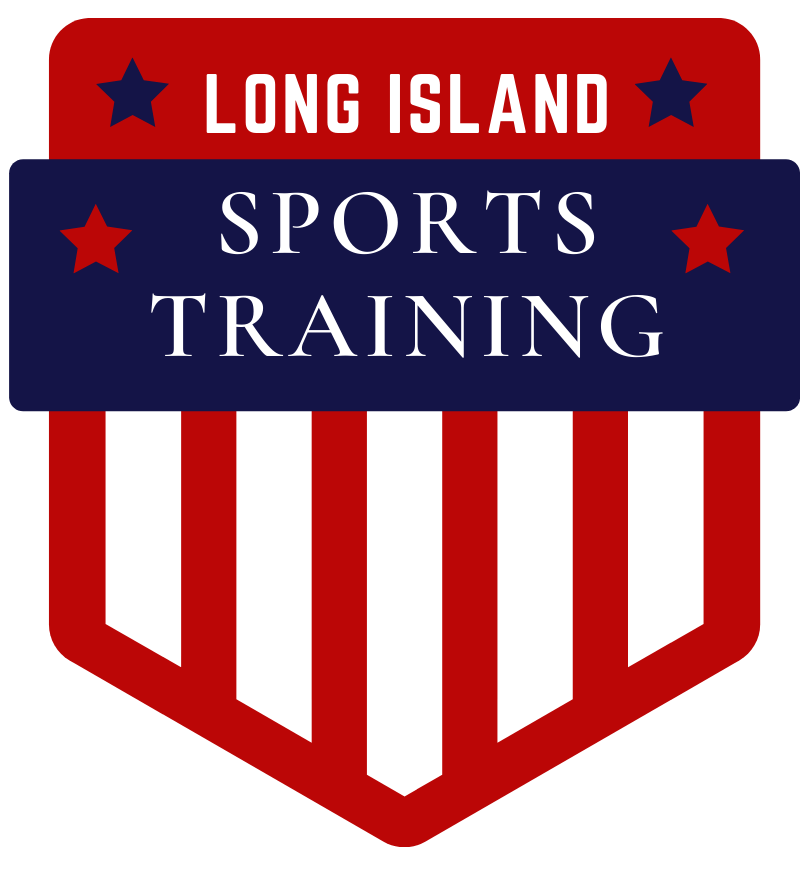Long Island High School Sports Strength And Conditioning Fitness Training Program Highlights
 Long Island High School Sports Strength and Conditioning Fitness Training Program Highlights
Long Island High School Sports Strength and Conditioning Fitness Training Program Highlights
Want to play Long Island High School Sports? Being in top shape can bring you many advantages over your opponents. Therefore, in this blog, we are highlighting the benefits of incorporating a strength and conditioning fitness training program into your routine.
A well-rounded high school sports experience encompasses not only academics but also physical fitness and athletic development. Long Island, a region known for its vibrant sports culture, knows the importance of a comprehensive High School Sports Strength and Conditioning Fitness Training Program in getting athletes to college or beyond.
Effective and consistent strength and conditioning fitness training plays a crucial role in honing athletes’ skills, improving performance, and promoting overall health and well-being.
In this blog post, we delve into how a strength and conditioning program helps with the development of young athletes, shedding light on its key components and the impact it has on the local youth sports community.
How To Succeed At Long Island High School Sports Through Strength And Conditioning Fitness Training
- Tailored Workouts for All Sports: Any relevant High School Sports Strength and Conditioning Fitness Training Program on Long Island recognizes that different sports demand specific physical attributes. From football to soccer, basketball to lacrosse, the program should offer tailored workouts that cater to the unique needs of each sport. Athletes benefit from sport-specific exercises, drills, and training regimens that enhance their agility, endurance, strength, and speed.
- Expert Coaching and Guidance: Central to any fitness training program’s success are the expert coaches and trainers who bring a wealth of knowledge and experience to the table. These professionals design and lead training sessions, ensuring athletes adopt proper techniques and avoid injuries. The personalized guidance fosters a supportive environment where athletes can grow and flourish.
- Holistic Approach to Fitness: Beyond the realm of sport-specific training, an elite strength and conditioning program takes a holistic approach to fitness. Participants should engage in a variety of exercises, including cardiovascular workouts, flexibility routines and core strengthening exercises. This comprehensive approach not only optimizes athletic performance but also instills healthy habits that can last a lifetime.
- Injury Prevention and Recovery: In any rigorous sports training regimen, the risk of injuries is a concern. An effective strength and conditioning program prioritizes injury prevention by incorporating dynamic warm-ups, mobility exercises, and proper cooldown routines. Additionally, if injuries do occur, the program should offer guidance on rehabilitation and recovery, emphasizing the importance of listening to one’s body.
- Mental Resilience and Team Building: Athletics is not solely about physical prowess; mental resilience and team dynamics play pivotal roles in achieving success. The program should integrate mental conditioning sessions that help athletes develop focus, confidence, and a winning mindset. Moreover, through team workouts and collaborative exercises, athletes learn the value of teamwork, camaraderie, and mutual support.
How Much Strength And Conditioning Training Should A High School Athlete Be Doing
Consistency matters but so does rest and recovery. Therefore, the amount of strength and conditioning training for a high school athlete can vary based on factors such as the athlete’s sport, age, physical condition, and training goals. However, here are some general guidelines to consider:
- Frequency: High school athletes can benefit from strength and conditioning training 2 to 4 times per week in the off season and 1-2 in season depending on an individual athlete’s on field work load in a specific sport. This frequency allows for adequate recovery between sessions while providing consistent training stimulus.
- Duration: Each training session typically should range from 60 to 90 minutes. Sessions should be well-structured, focusing on a combination of strength exercises, cardiovascular conditioning, flexibility and mobility work.
- Rest Days: Rest days are essential for recovery and injury prevention. Athletes should have at least 1 to 2 days of complete rest each week. Ice baths, heat wraps and athletic massage speed up recovery.
- Periodization: Training should be periodized to include phases of building strength, power, endurance, and recovery. This approach prevents overtraining and helps athletes peak for important competitions.
- Sport-Specific Considerations: The type of sport the athlete participates in will influence the training emphasis. For example, a basketball player might focus on agility and explosive movements, while a cross-country runner might emphasize endurance and cardiovascular fitness.
- Individualization: Training programs should be tailored to the athlete’s age, physical maturity, and training experience. Beginners may start with lower intensity and gradually progress, while more experienced athletes can handle higher volumes and intensities.
- Coaching and Supervision: Proper technique is crucial to prevent injuries and optimize performance. High school athletes should work with qualified coaches or trainers who can provide guidance and supervision during training sessions.
- Recovery: Adequate sleep, nutrition, hydration, and flexibility work play essential roles in the overall effectiveness of a strength and conditioning program. Athletes should prioritize recovery strategies to support their training efforts.
- Academic Commitments: High school athletes have academic responsibilities that need to be balanced with training. It’s important to structure training around school schedules and prioritize time management. Good grades and athletic ability can open many doors for you.
- Consultation with Professionals: Before starting a strength and conditioning program, it’s advisable for athletes to undergo a fitness assessment and consult with coaches, trainers, and medical professionals to ensure the program aligns with their individual needs and goals.
Remember, the goal is to achieve a balanced and sustainable approach to training that supports the athlete’s physical development, performance improvement and overall well-being.
How Do Strength And Conditioning Fitness Training Programs Help In The Athletic Development Of High School Athletes

Strength and conditioning fitness training programs play a pivotal role in the athletic development of high school athletes by providing a structured and comprehensive approach to physical training.
These programs typically offer a wide range of benefits that contribute to improved performance, injury prevention, and overall well-being. Here’s how a complete strength and conditioning fitness training program can help in the athletic development of high school athletes:
- Enhanced Physical Performance: Strength and conditioning programs are designed to improve key athletic attributes such as strength, power, speed, agility, and endurance. By targeting specific muscle groups and energy systems, athletes can enhance their physical capabilities, enabling them to excel in their respective sports.
- Sport-Specific Training: These programs tailor workouts to the demands of the athlete’s sport. Sport-specific exercises and drills help athletes develop skills and movements directly applicable to their competition, leading to better on-field performance.
- Injury Prevention: Properly designed strength and conditioning programs include exercises that enhance joint stability, muscular balance, and flexibility. This reduces the risk of injuries by improving biomechanics and ensuring that athletes are well-prepared to handle the physical demands of their sports.
- Improved Muscle Imbalances: Many athletes develop muscle imbalances due to the repetitive nature of their sports. Strength and conditioning programs address these imbalances by targeting underdeveloped muscle groups, promoting balanced musculature, and reducing the risk of overuse injuries.
- Increased Strength and Power: Building strength and power is a cornerstone of athletic development. Strength training helps athletes generate more force, which is critical for explosive movements such as sprinting, jumping, and throwing.
- Cardiovascular Conditioning: High-intensity interval training (HIIT) and cardiovascular exercises in strength and conditioning programs improve athletes’ endurance and stamina. This is essential for sports that involve continuous or intermittent aerobic efforts.
- Improved Agility and Coordination: Agility drills and multi-directional exercises improve an athlete’s ability to change direction quickly, react to opponents, and maintain balance, enhancing overall coordination and agility on the field.
- Mental Resilience: Strength and conditioning programs challenge athletes physically and mentally, fostering mental toughness, discipline, and perseverance. Overcoming training obstacles translates to improved resilience in competitive situations.
- Team Bonding and Motivation: Group training sessions create a sense of camaraderie and motivation among athletes. Working together towards common fitness goals can strengthen team cohesion and boost morale.
- Long-Term Health and Habits: Strength and conditioning programs instill healthy lifestyle habits from a young age. Athletes learn the importance of regular exercise, proper nutrition, and injury prevention strategies, setting the foundation for lifelong wellness.
- Physical and Mental Confidence: As athletes see improvements in their strength, speed, and overall fitness, they gain a sense of confidence in their abilities, positively impacting their performance and mindset.
- Preparation for Collegiate Athletics: High school athletes aiming to compete at the collegiate level benefit from the physical foundation provided by a solid strength and conditioning program. College coaches often look for athletes who arrive with a strong fitness base and solid training background.
What To Look For In A Quality High School Strength and Conditioning Fitness Training Program
A quality high school strength and conditioning fitness training program is essential for maximizing athletic development while minimizing the risk of injury. When evaluating such a program, consider the following key factors to ensure its effectiveness and suitability for your needs:
- Qualified Coaches and Trainers: Look for programs led by certified and experienced strength and conditioning coaches. These professionals should have relevant personal training certifications or a college degree. Including a strong background in sports science, exercise physiology and biomechanics.
- Individualization: A quality program should be tailored to the individual needs and goals of each athlete. The coaches should assess your current fitness level, sport-specific requirements, and any limitations or injuries you may have.
- Progressive Programming: The program should include a structured and progressive plan that gradually increases in intensity and complexity. This helps prevent plateaus, overtraining, and injury while promoting continuous improvement.
- Variety and Specificity: A well-rounded program includes a variety of exercises targeting different muscle groups and movement patterns. It should also incorporate sport-specific drills to enhance skills directly related to your athletic discipline.
- Injury Prevention: The program should prioritize injury prevention through exercises that improve joint stability, mobility, and muscular balance. Proper warm-ups, cool-downs, and recovery strategies should also be integrated.
- Nutrition Guidance: While not always a central component, a quality program might offer basic nutritional guidance or resources to support your training goals and overall well-being.
- Athlete Education: Coaches and trainers should educate athletes about proper exercise techniques, training principles and the purpose of various exercises. This empowers athletes to make informed decisions and maintain correct form.
- Monitoring and Feedback: Regular assessments, progress tracking, and feedback from coaches are important for ensuring you’re making consistent improvements and staying on the right track.
- Positive Training Environment: A supportive and motivating atmosphere is crucial for optimal performance. Look for programs that foster a positive training environment and encourage camaraderie among participants.
- Flexibility and Adaptability: A good program can be adjusted based on an athlete’s changing needs, goals and external factors like competition schedules or injuries.
- Clear Communication: Coaches should clearly communicate the program’s goals, expectations and any changes. They should also be accessible for questions and concerns.
Remember, a quality strength and conditioning fitness program is not a one-size-fits-all solution. It should be personalized, adaptable, and designed to help you reach your athletic goals while prioritizing your health and well-being.
Conclusion
High school sports are getting more competitive then ever on Long Island. Therefore, achieving a competitive edge through a Long Island High School Sports Strength and Conditioning Fitness Training Program can separate you from your peers.
Through effective sport-specific training, expert coaching, holistic approach to fitness, injury prevention measures, mental resilience training, and emphasis on academic-athletic balance, a quality program equips participants with the tools they need to thrive on and off the field.
As Long Island continues to produce outstanding athletes and leaders, the quality development of young athletes through strength and conditioning fitness training remains a driving force behind the region’s rich sports legacy.
Let’s Talk: Contact Tim @ Long Island Sports Training
If you are looking for local individual jump, strength and agility fitness training sessions to help you reach peak performance contact us:
Web Page:
https://longislandsportstraining.com/speed-and-agility-training/
Phone:
631-594-4048
Email:
Tim@LongIslandSportsTraining.Com
